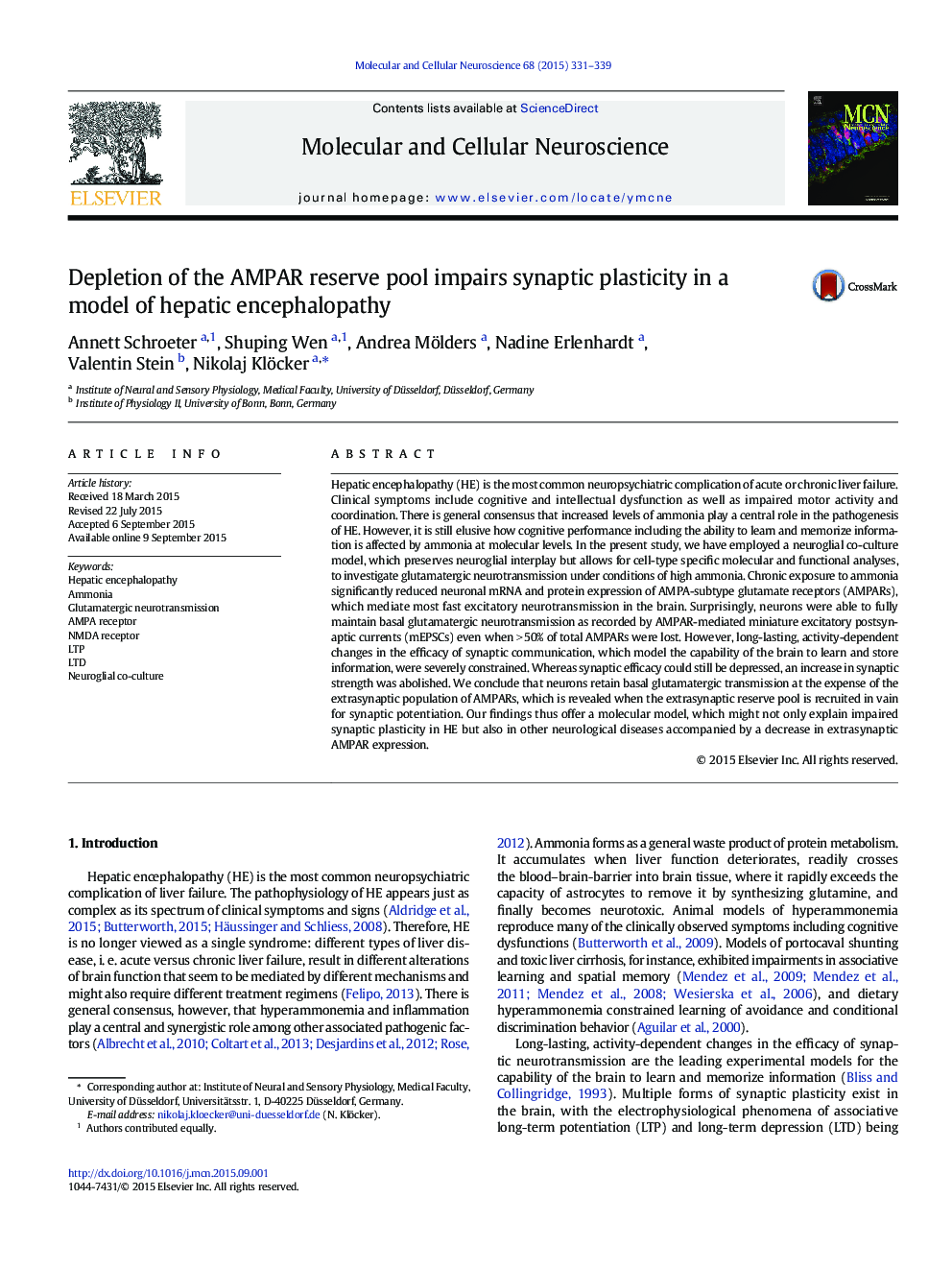| کد مقاله | کد نشریه | سال انتشار | مقاله انگلیسی | نسخه تمام متن |
|---|---|---|---|---|
| 8478548 | 1551138 | 2015 | 9 صفحه PDF | دانلود رایگان |
عنوان انگلیسی مقاله ISI
Depletion of the AMPAR reserve pool impairs synaptic plasticity in a model of hepatic encephalopathy
دانلود مقاله + سفارش ترجمه
دانلود مقاله ISI انگلیسی
رایگان برای ایرانیان
کلمات کلیدی
موضوعات مرتبط
علوم زیستی و بیوفناوری
بیوشیمی، ژنتیک و زیست شناسی مولکولی
بیولوژی سلول
پیش نمایش صفحه اول مقاله

چکیده انگلیسی
Hepatic encephalopathy (HE) is the most common neuropsychiatric complication of acute or chronic liver failure. Clinical symptoms include cognitive and intellectual dysfunction as well as impaired motor activity and coordination. There is general consensus that increased levels of ammonia play a central role in the pathogenesis of HE. However, it is still elusive how cognitive performance including the ability to learn and memorize information is affected by ammonia at molecular levels. In the present study, we have employed a neuroglial co-culture model, which preserves neuroglial interplay but allows for cell-type specific molecular and functional analyses, to investigate glutamatergic neurotransmission under conditions of high ammonia. Chronic exposure to ammonia significantly reduced neuronal mRNA and protein expression of AMPA-subtype glutamate receptors (AMPARs), which mediate most fast excitatory neurotransmission in the brain. Surprisingly, neurons were able to fully maintain basal glutamatergic neurotransmission as recorded by AMPAR-mediated miniature excitatory postsynaptic currents (mEPSCs) even when >Â 50% of total AMPARs were lost. However, long-lasting, activity-dependent changes in the efficacy of synaptic communication, which model the capability of the brain to learn and store information, were severely constrained. Whereas synaptic efficacy could still be depressed, an increase in synaptic strength was abolished. We conclude that neurons retain basal glutamatergic transmission at the expense of the extrasynaptic population of AMPARs, which is revealed when the extrasynaptic reserve pool is recruited in vain for synaptic potentiation. Our findings thus offer a molecular model, which might not only explain impaired synaptic plasticity in HE but also in other neurological diseases accompanied by a decrease in extrasynaptic AMPAR expression.
ناشر
Database: Elsevier - ScienceDirect (ساینس دایرکت)
Journal: Molecular and Cellular Neuroscience - Volume 68, September 2015, Pages 331-339
Journal: Molecular and Cellular Neuroscience - Volume 68, September 2015, Pages 331-339
نویسندگان
Annett Schroeter, Shuping Wen, Andrea Mölders, Nadine Erlenhardt, Valentin Stein, Nikolaj Klöcker,